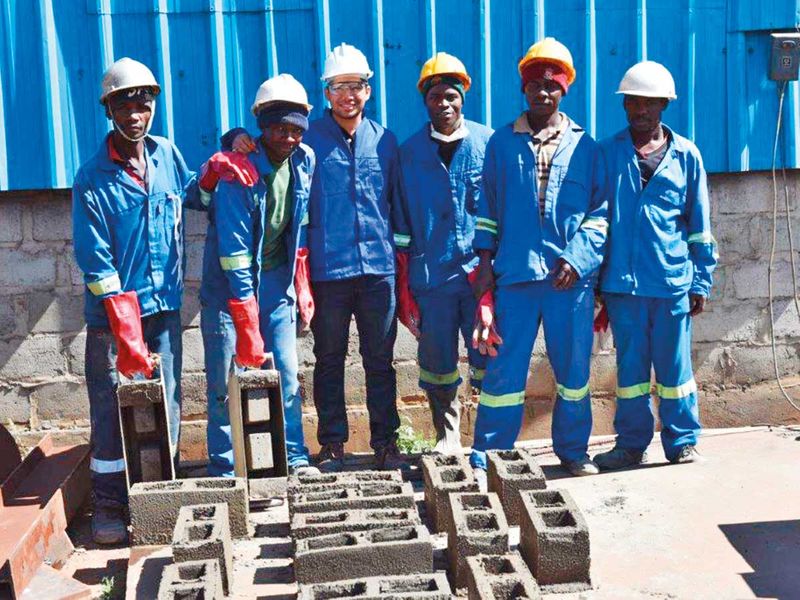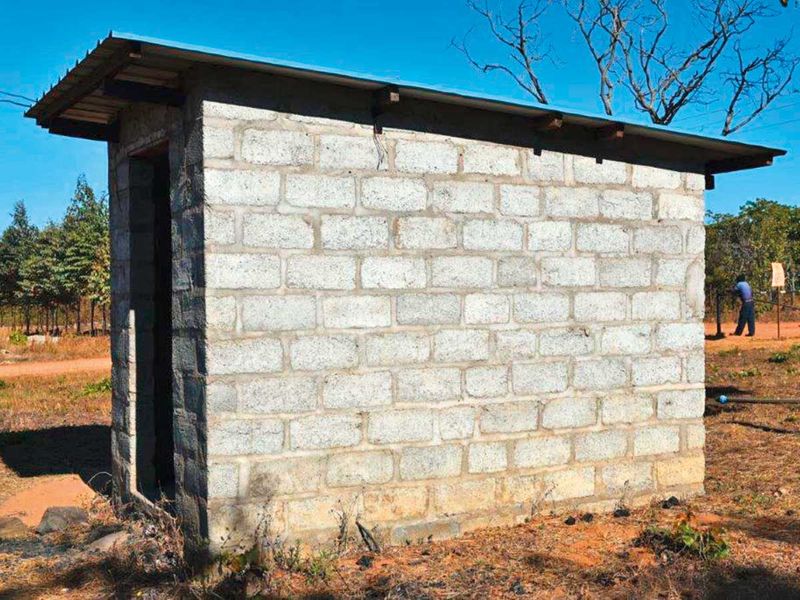Dubai: Normally when villagers in rural Zambia need land to set up home they approach the chief on their knees with offerings of goats or chickens.
Eighteen-year-old Dubai-based Indian expat Kabir Malhotra did the same sans livestock and armed only with an idea, but came away with a hectare.
What did he propose? For the villagers to do away with mud huts and use reclaimed industrial (silicomanganese) waste (known as slag) from a local factory to produce more rigid and affordable housing. Give him some land to trial this method and he would show them how. The chief obliged.
“Mud bricks last two months to two years depending on the soil composition, and 40 per cent of the bricks don’t make it through the last stage of formation, so a lot of effort goes unutilised,” said the Dubai International Academy student, who was interning at an African alloy factory at the time of last year’s tribal encounter.
“My bricks are three times stronger, last 40 years and don’t absorb as much moisture,” he added.
On top of this the material to make Kabir’s bricks is virtually free.
“Factories often pay you to take slag away because they don’t want the environmental headache of what to do with it next,” he said, “which means the only expenditure for the production of our bricks is cement and dry ash,” which he’s managed to fund through sponsors.
It also does away with the environmental damage of digging for mud bricks, and in fact prevents more environmental damage by finding another use for waste industrial produce that is completely safe to recycle for use in construction.

For every tonne of steel produced approximately 600kg of slag is dumped, but it could be used to build homes, said Kabir, who has written a paper on the subject to be included in an international construction journal this week.
The chief was so sold on the idea that he granted Kabir some land, where he has now built six 10×12 foot houses over the last two months with plans for 14 more before the end of the year.
The idea to find a sustainable solution to the lack of affordable housing first came to Kabir when he saw the slums of his native Delhi, where he has since approached a similar factory in Vishakhapatnam to start another project based on his success in Zambia.

He’s even gone to sponsors in India to try and fund the electricity and water supply to his houses in Zambia.
“I knew action needed to be taken, but the situation was definitely more pressing in Zambia,” he added. “Two thirds of the population there spend 50 per cent of their income to access quality housing and that’s absurd.
“This is what forces people to live in mud brick houses, but the conditions are dangerously unhygienic due to constant leakages and copious amounts of bacteria.
“On the other hand, our alternative is sustainable, because the primary material in the production process is being recycled and reused, and it’s for a very good cause,” he added.
“Similar alloy factories will begin operating in Abu Dhabi’s Kizad Industrial area over the next six or seven months,” he said. “As soon as this happens, I’ll take a look at the composition of their waste and try to establish the same concept here.”

One market where more affordable housing materials would help in the UAE is in the construction of workers’ accommodation, he said.
“Most companies provide workers with housing, but building a proper society would be extremely helpful in certain cases.
“If the government noticed how sustainable our production process is, they would definitely support the movement and get involved more seriously. In my opinion, there is a huge scope for the application of this concept in the UAE, and in the near future we can start producing workers’ accommodations using just these bricks.”
Is Kabir the first to do this?
There are more than 20 types of slag in the steel industry and each one can be put to a different use, explains Kabir. Even the same slag has different properties. To his knowledge, this type of slag and its particular composition hasn’t previously been used at the ratio he has applied of 3:1:1 (three parts of slag, to one part dry ash and one part cement) in other parts of the world. But he is, he claims, the first to use it to build homes in southern Africa, as silicomanganese slag was just being disposed of by local factories. As he has not technically invented anything and just experimented with different ratios to find the most durable brick, he does not plan to apply for a patent.
Source: gulfnews




